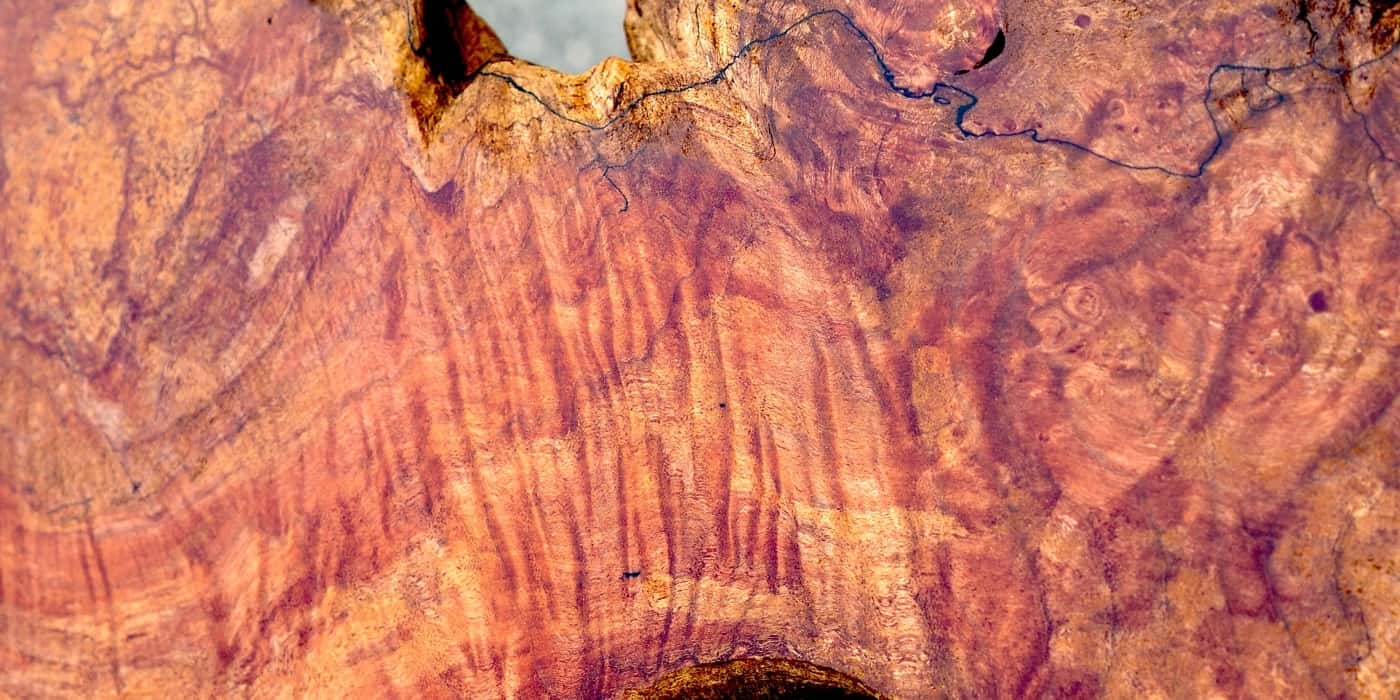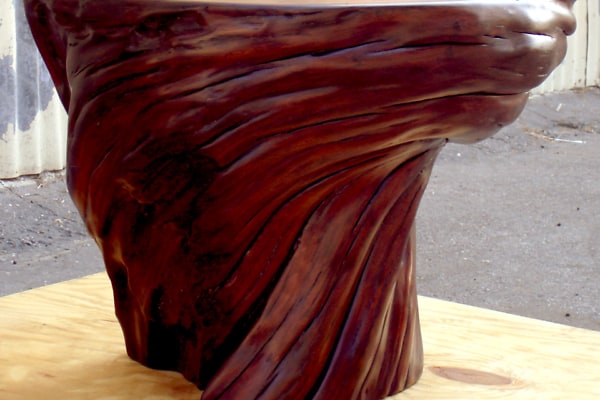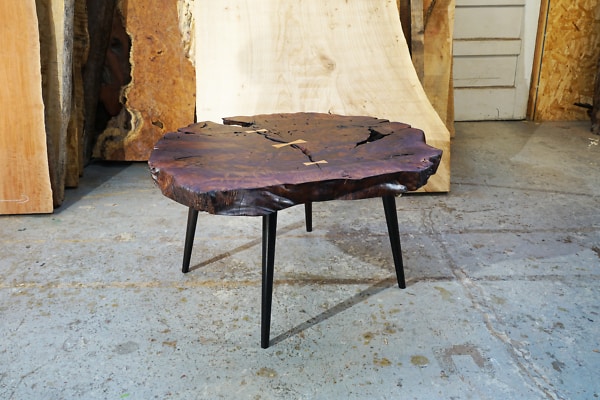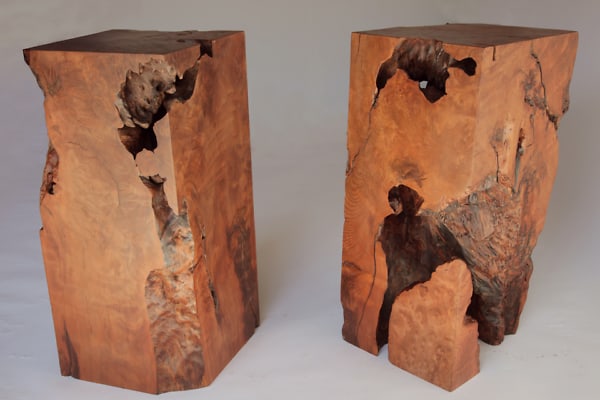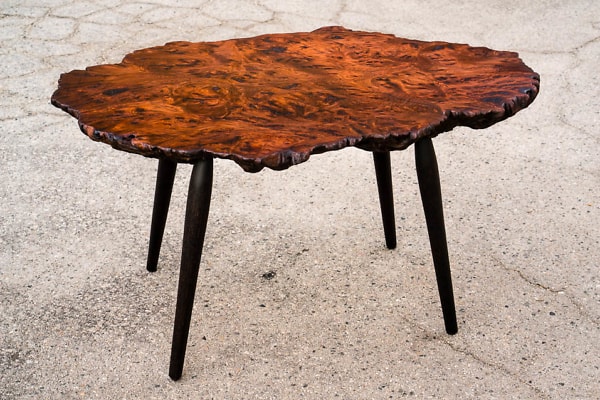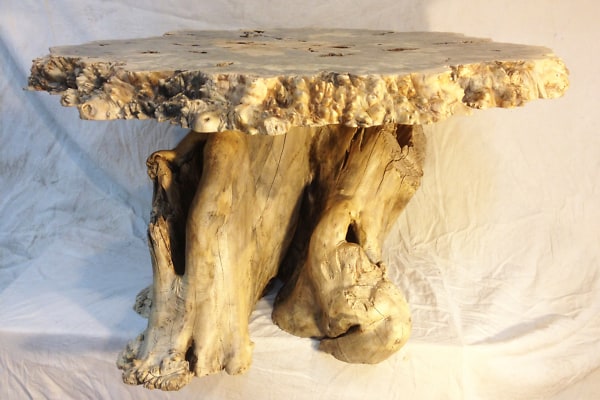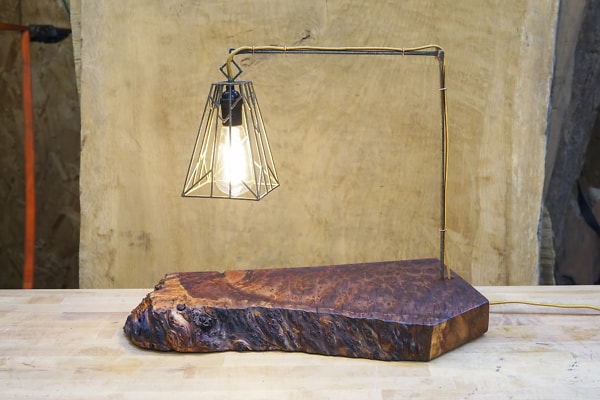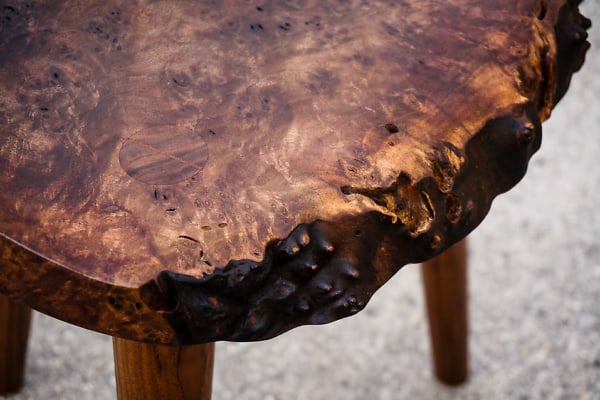If you're searching for fine furniture with a wizened look that would be worthy of Gandalf the Grey, it's hard to go past the wooden burl. Burl wood is capable of generating some of the most interesting and figurative woodgrain patterns around. When utilized properly, its presence on a piece of custom wood furniture can take it to the next level.
What Burls Are, And How They Occur
A burl (or "Burr" as it's commonly known in the UK) is a particular type of growth that occurs on trees. It's actually a deformation of a tree’s normal way of growing. Burr's don't usually appear for no reason, and as a matter of fact they are the tree's response to some form of stress.
Think of them as an unattractive non-fatal tumor on the tree that happens to manifest in some extremely attractive and marbled woodgrain patterns. It makes for epic coffee tables, lamp-bases, and more.
Common Stressors That Cause Burls Formations
Burls are usually caused by one of the following:
- Injury (fire damage, water erosion, impacted and embedded objects, etc.)
- Bacteria & Viruses
- Mold & Fungi
- Insect Infestation
Common Burl Species for Furniture Making
It’s possible for burls to occur on nearly all tree species. However certain species are more vulnerable than others, and not all species are fit for furniture-grade construction. Redwood, Walnut, and Maple are some of the more common burl-prone species that we work with.
Burls & Sustainable Harvesting
Despite all the deformation burls don't often incur fatal harm to the tree. In fact, burls can be a sustainable wood product if they are harvested in the with care and know-how.
All materials in our slab and burl inventory is sustainable harvested from salvaged or fallen trees.
Become an owner
If you're serious about owning your own unique piece of heirloom-quality American furniture, we're here for you.
Inquire now if you'd like to commission us for something new
